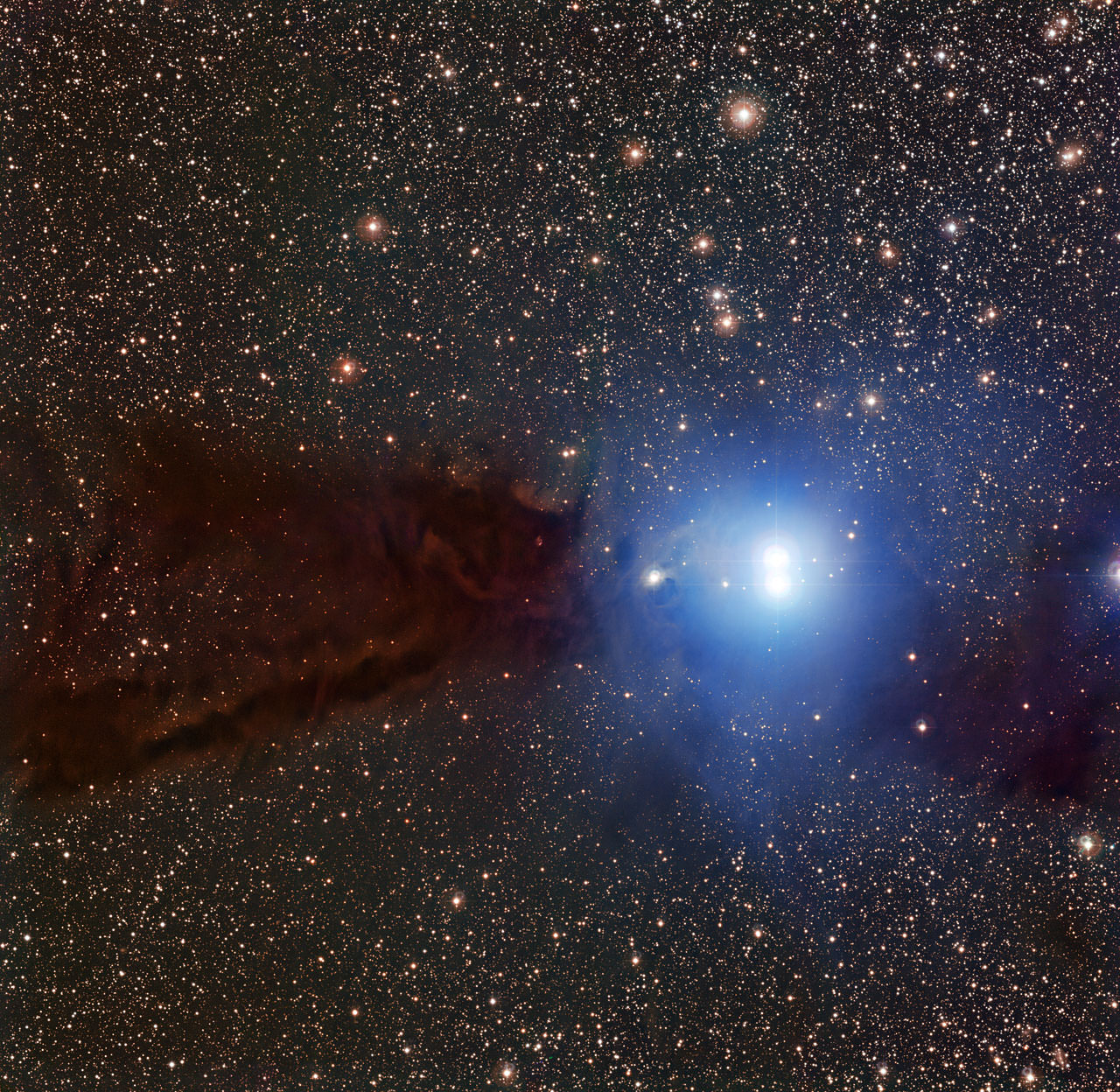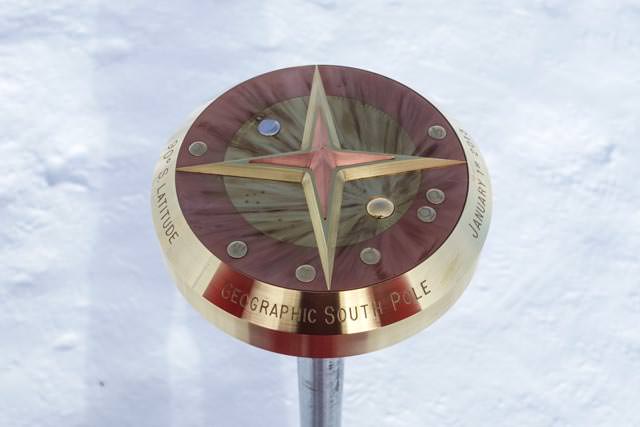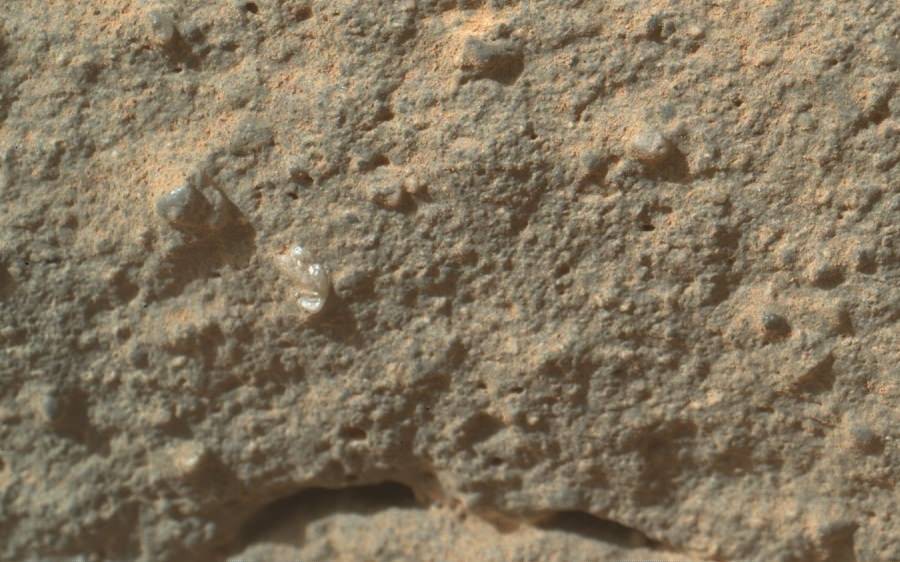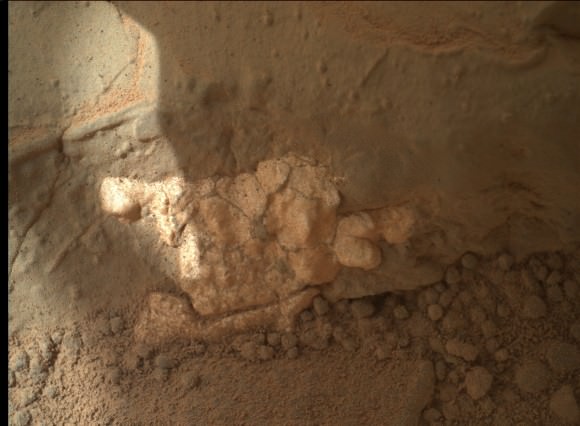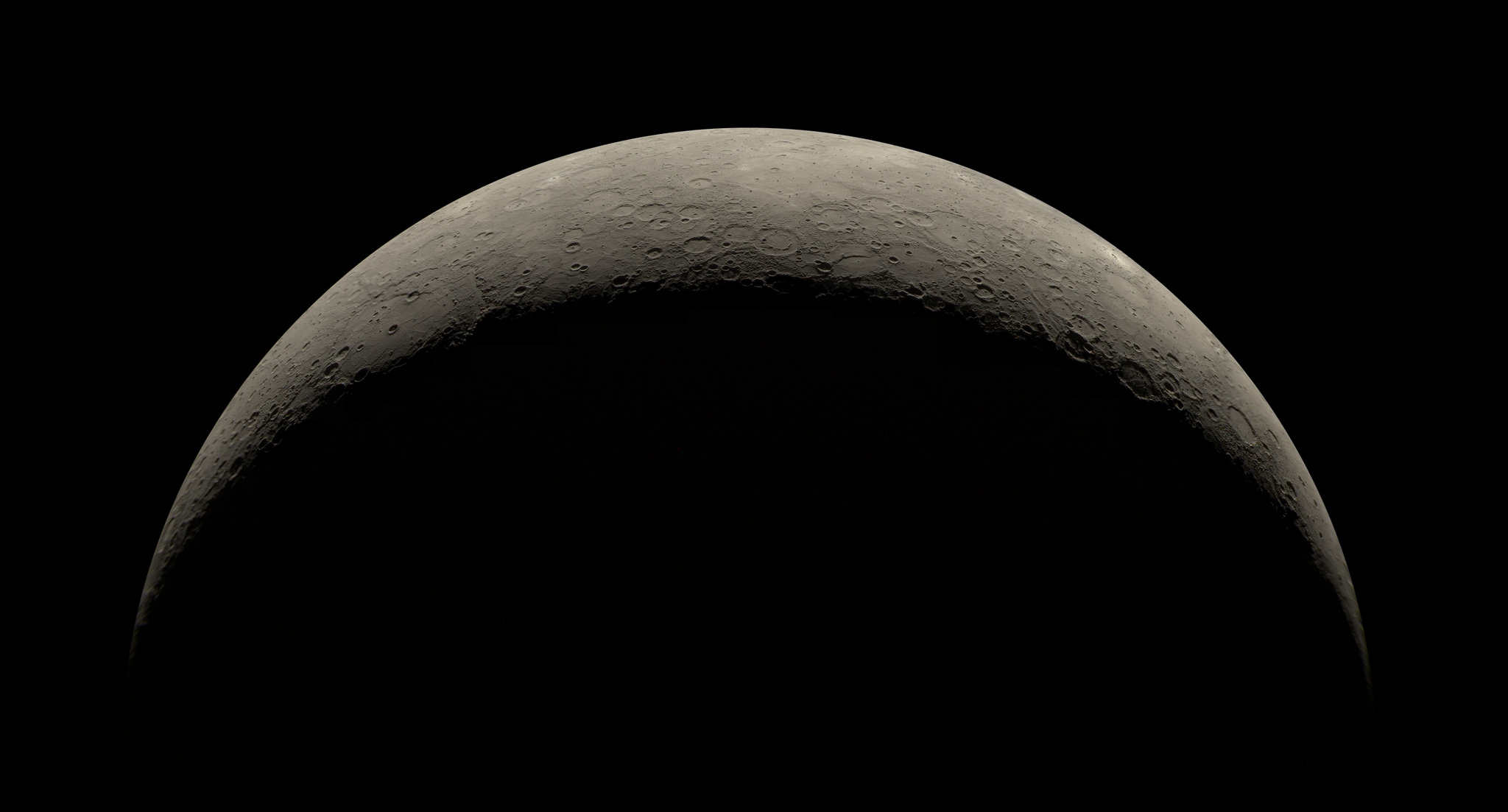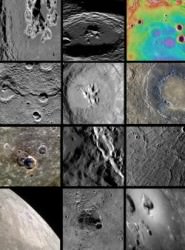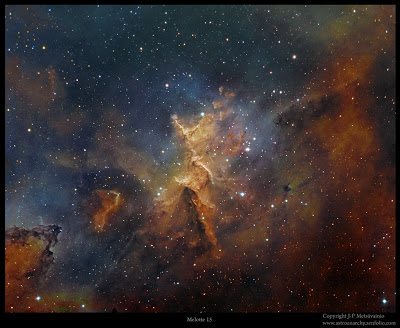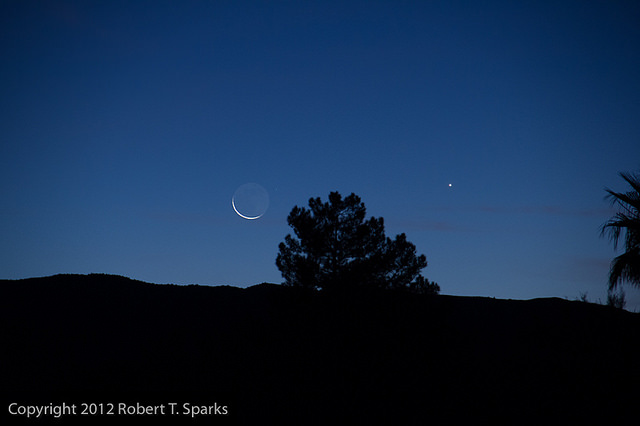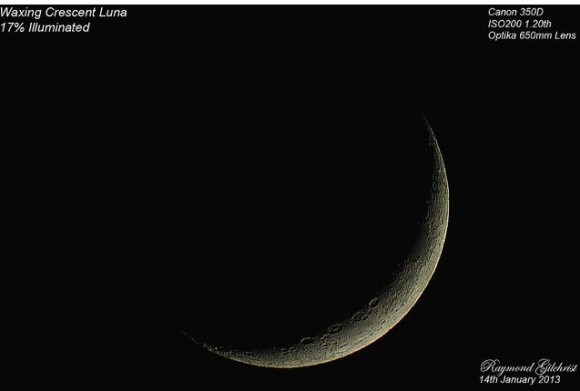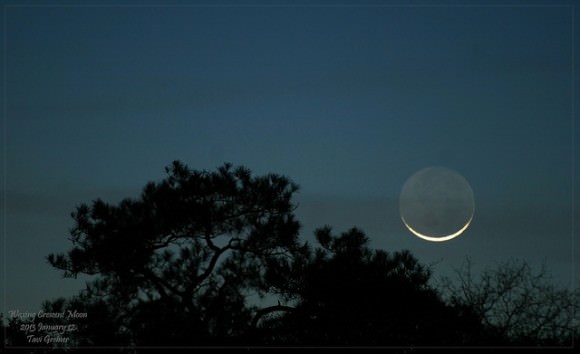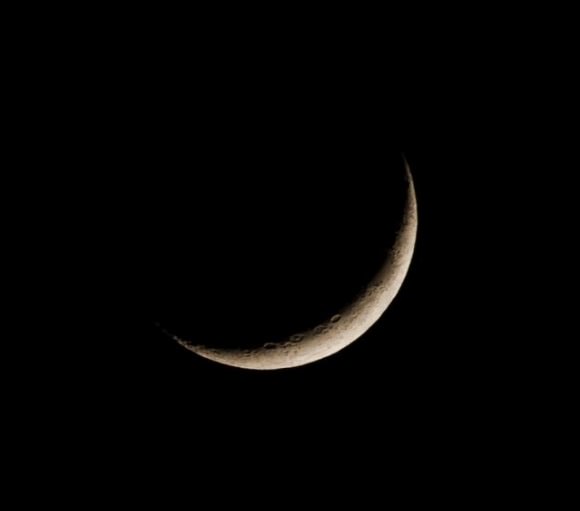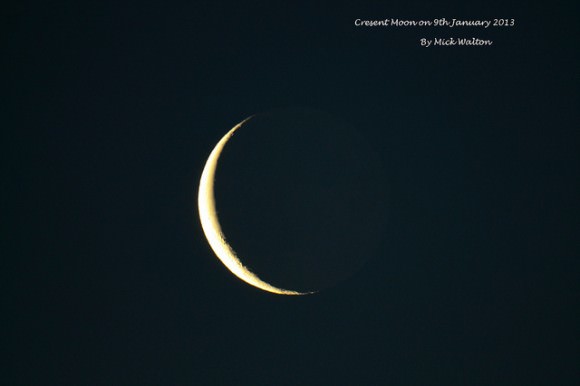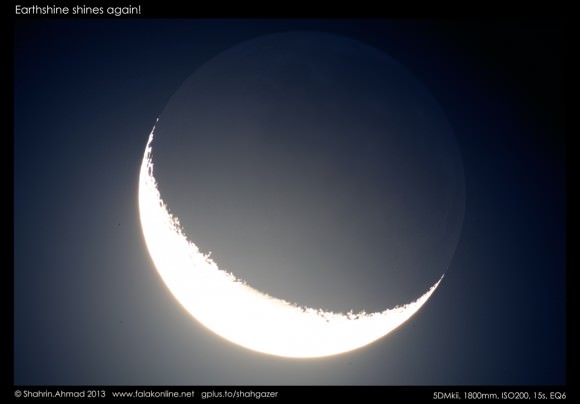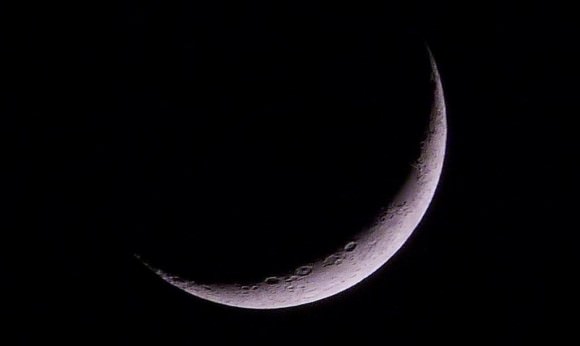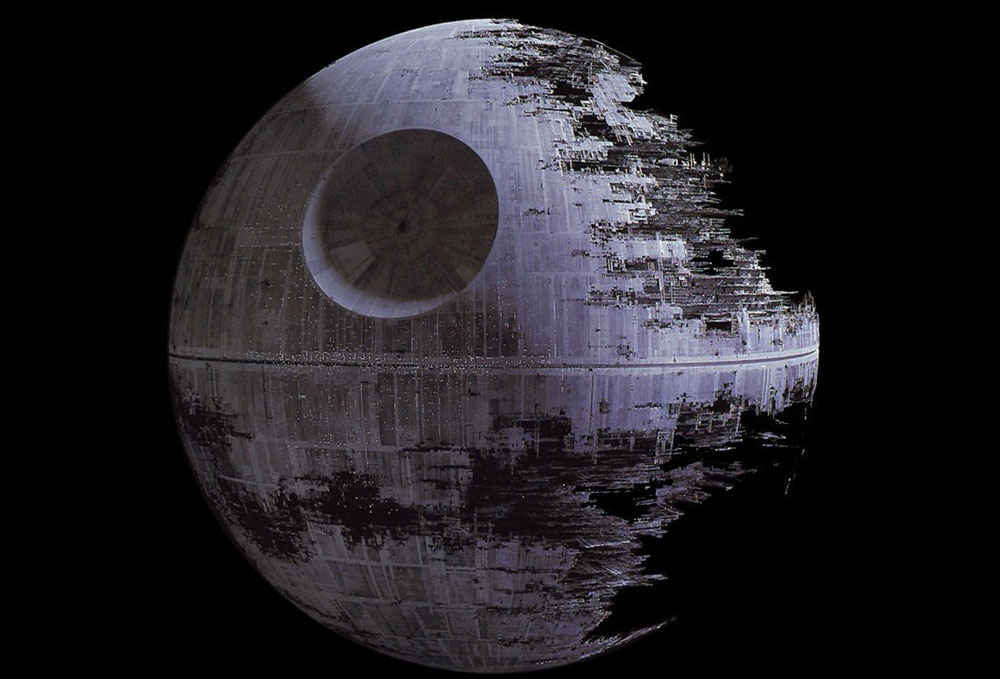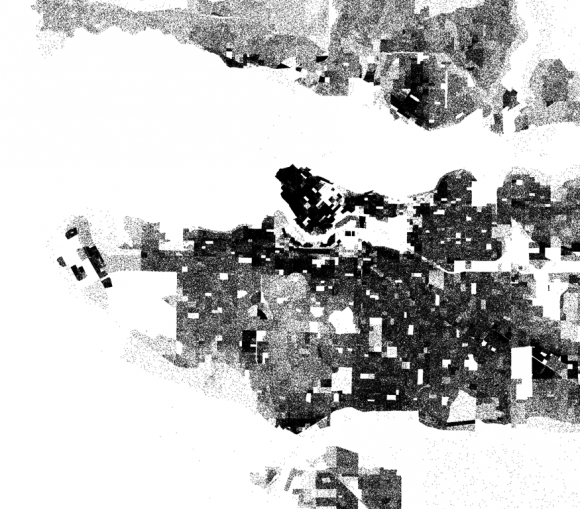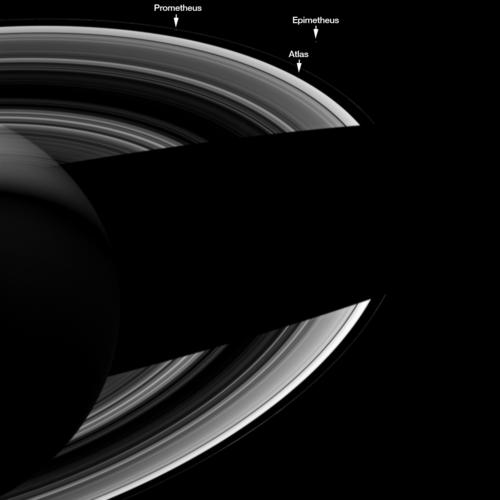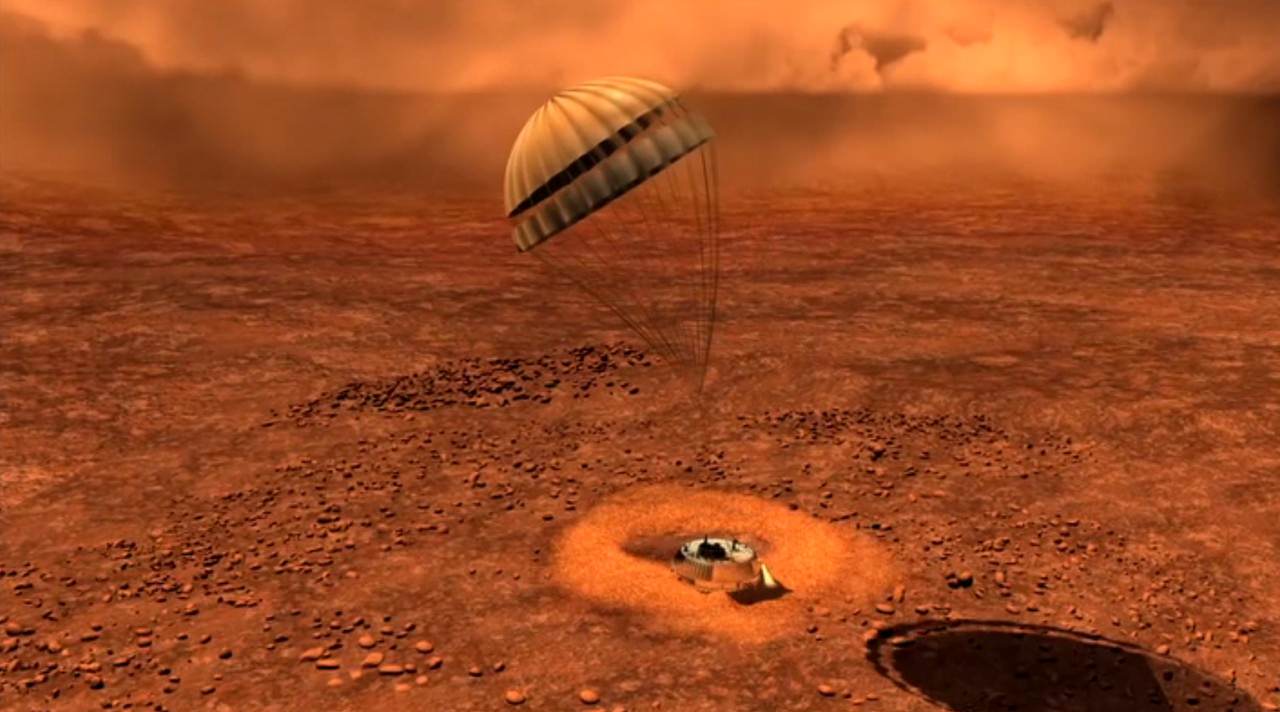The new geographic South Pole marker that stands at 90º S latitude. (Credit: Jeffrey Donenfeld)
Because the Amundsen-Scott South Pole Station sits atop a layer of moving ice almost 2 miles thick, the location of the marker for the Earth’s geographic South Pole needs to be relocated regularly. Tradition has this done on New Year’s Day, and so this past January 1 saw the unveiling of the newest South Pole marker: a beautiful brass-and-copper design created by Station machinist Derek Aboltins.
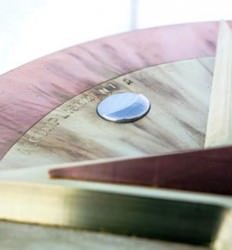 The top of the marker has seven small discs that represent the planets in the positions they would be in on Jan. 1, 2013, as well as two larger discs representing the setting Sun and Moon. Next to the Moon disc are the engraved words “Accomplishment & Modesty,” a nod to the first man on the Moon.
The top of the marker has seven small discs that represent the planets in the positions they would be in on Jan. 1, 2013, as well as two larger discs representing the setting Sun and Moon. Next to the Moon disc are the engraved words “Accomplishment & Modesty,” a nod to the first man on the Moon.
“This was a reference to honor Neil Armstrong, as he passed away when I was making this section with the moon,” Aboltins said.
And for folks who might think the planet count on the new marker is one too few, a surprise has been tucked away on the reverse side.
“For those of you who still think Pluto should be a planet, you’ll find it included underneath, just to keep everyone happy,” Aboltins said. “Bring back Pluto, I say!”
And so, on the underside of the marker along with the signatures of South Pole Station researchers and workers, is one more disc — just for the distant “demoted” dwarf planet.
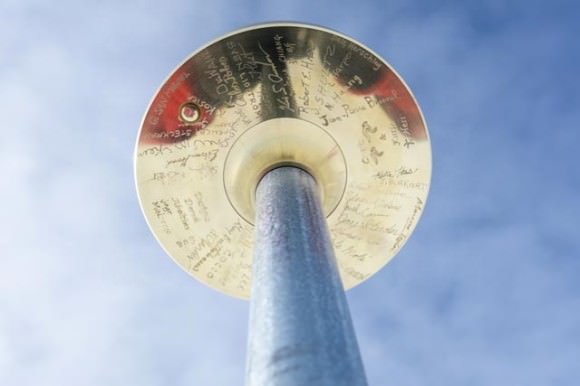
Underside of the South Pole marker (Credit: Jeffrey Donenfeld)
“For those of you who still think Pluto should be a planet, you’ll find it included underneath, just to keep everyone happy!”
– Derek Aboltins, designer and machinist
(See high resolution versions of these images here.)
The marker was placed during a ceremony on the ice on Jan. 1, during which time the previous flag marker was removed and put into its new position.

(Photo credit: Jeffrey Donenfeld)
According to The Antarctic Sun:
“Almost all hands were present for the ceremony, including station manager Bill Coughran, winter site manager Weeks Heist, and National Science Foundation representative Vladimir Papitashvili. The weather was sunny and a warm at just below minus 14 degrees Fahrenheit.”
(Even though it’s mid-summer in Antarctica, “warm” is clearly a relative term!)
Read more about this and other Antarctic news on The Antarctic Sun site, and see more photos from Antarctica by Jeffrey Donenfeld here.
_____________________
Named for explorers Roald Amundsen and Robert F. Scott, who attained the South Pole in 1911 and 1912, the Amundsen-Scott South Pole Station stands at an elevation of 2,835 meters (9,306 feet) on Antarctica’s ice sheet, which is about 2,700 meters (9,000 feet) thick at that location. The station drifts with the ice sheet at about 10 meters (33 feet) each year. Research is conducted at the station in the fields of astronomy, astrophysics, glaciology, geophysics and seismology, ocean and climate systems, biology, and medicine.

